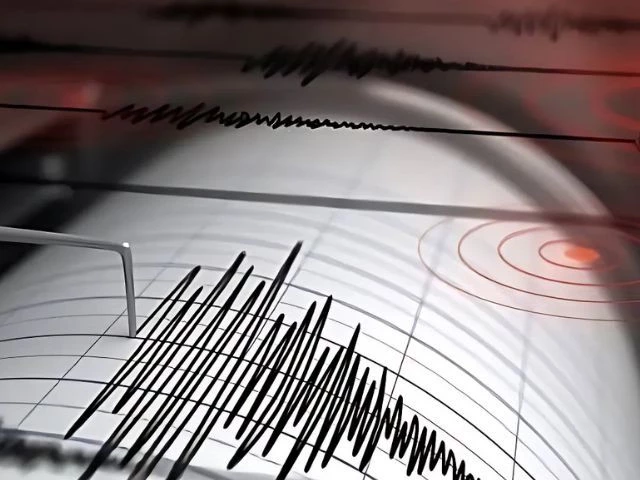Karachi has witnessed an unprecedented series of 19 mild earthquake tremors since Sunday night, marking a significant seismic event in the city’s history. The strongest tremor recorded measured 3.6 in magnitude, while the weakest registered 2.1, according to official data from the Early Tsunami Warning Cell Karachi.
The majority of the tremors were felt in Malir district, with others reported in southwestern Korangi and northeastern DHA. Experts attribute these repeated seismic activities to shifts in underground tectonic plates, caused by the release of energy from low-level seismic movements beneath the Earth’s surface.
Residents in affected areas like Malir and Quaidabad have taken precautionary measures by staying outdoors in temporary shelters and tents. Many gathered to recite the Holy Quran, praying for safety. Karachi Commissioner Syed Hassan Naqvi urged calm and discouraged belief in social media rumors.
The National Tsunami Center, part of the Pakistan Meteorological Department, clarified that these tremors are part of a natural geological process, not an indication of an impending major disaster. Ameer Haider Laghari, head of the center, noted the active Quaidabad fault line could cause tremors for up to a week. The first earthquake of the year in Karachi, with a 4.7 magnitude, was recorded on March 31.
Chronological details of recent tremors highlight consistent seismic activity mainly in Malir and Quaidabad. These tremors stem from natural tectonic shifts where energy is gradually released. Laghari emphasized these are independent seismic events, not aftershocks, and their intensity is decreasing.
READ MORE: PITB and Excise Department Launch Online Auction for Special Vehicle Registration Numbers
Dr. Adnan Khan, Associate Professor and Geologist at the University of Karachi, described these tremors as minor and not a cause for alarm. Karachi’s location on a passive tectonic margin means the risk of a large destructive earthquake is very low. He also mentioned possible subtle influences from human activities like groundwater extraction and industrial waste disposal.
Both experts advised residents of structurally weak buildings to evacuate during tremors and to seek open spaces away from walls and tall structures for safety.
Meanwhile, the seismic activity coincided with a major security breach at District Malir Jail, where 216 prisoners escaped amid the chaos caused by the earthquake. Jail Superintendent Arshad Shah confirmed the escape on Monday night during an inmate evacuation for safety.
Authorities swiftly deployed police, Rangers, and Frontier Corps (FC) personnel to secure the facility and contain the situation. So far, 78 escapees have been recaptured, and a large-scale search operation continues for the remaining fugitives. Security has been significantly increased, with Rangers managing the perimeter and police maintaining internal order.




